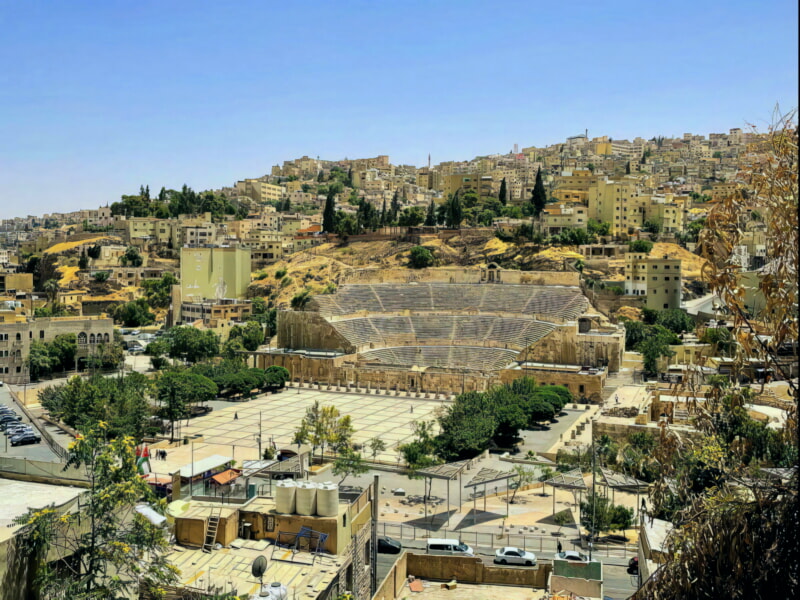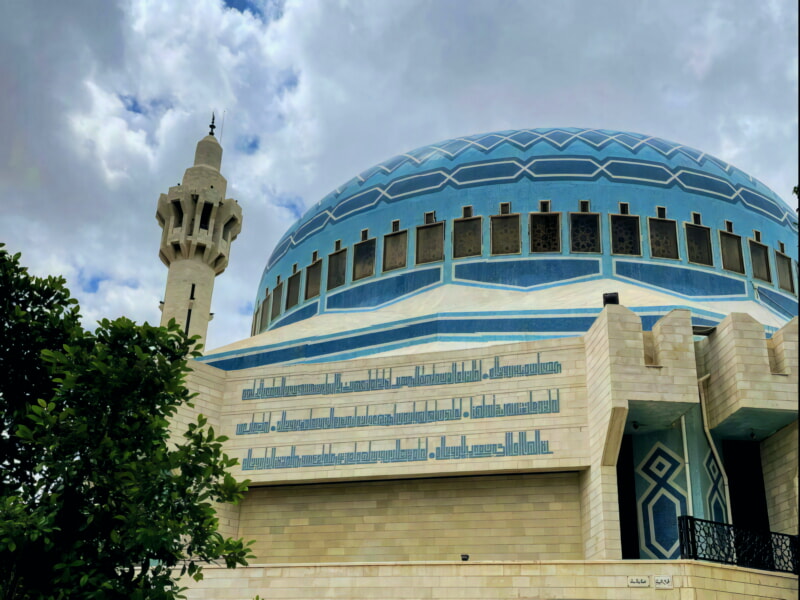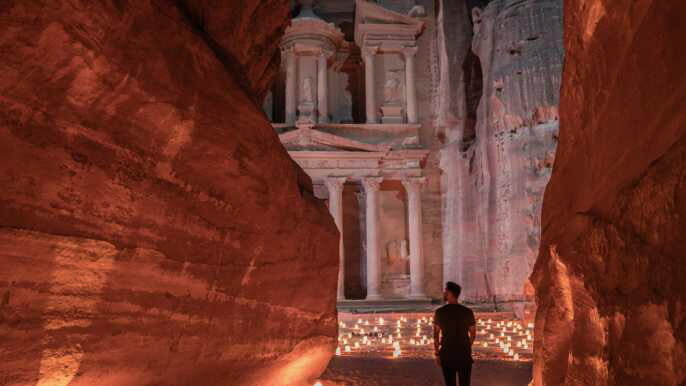There are a lot of things to see and do in Amman. This is a great city to explore on your own, but it can also be a good idea to hire a local guide.
One of the best places to visit in Amman is the Citadel. This 850-meter hill has been inhabited since ancient times and is an important spot in the history of Jordan.
1. The Citadel
The Citadel stands atop the seven hills of Amman and is one of the oldest parts of the city. Ruins of a Roman temple, a Byzantine church and an Umayyad palace are among the historical features on this Jebel al-Qal’a (the hill).
It is a place that tells you much about the layered history of Amman and Jordan as a whole, with traces left by Assyrians, Babylonians, Persians, Greeks, and Romans. It is also an important archaeological site that receives more than 125,000 visitors each year.
Stepping into the ruins of the citadel, decorative stones engraved with era-specific marks invite you to another world. These stones introduce you to three major eras: Rabbath Ammon, Philadelphia and finally Amman.
2. The Roman Theatre
Built into a hillside, the Roman Theatre in Amman is one of the largest amphitheatres in the Middle East. Commissioned by the Roman emperor Antoninus Pius, it was designed to be northerly oriented and could accommodate up to 6,000 spectators on its three-tier seating structure (cavea).
The upper tier was reserved for rulers and other VIPs who would have unobstructed views of the performers. The lower tier was for ordinary citizens.
The Roman Theatre was commissioned during the 2nd century and is a stunning example of how a city could be transformed by the power of art. It has been beautifully restored and is used today for shows and concerts. The theater is also home to the Jordan Museum of Popular Traditions and the Jordan Folklore Museum, which are open to visitors.

3. The Mukhaybeh Townhouse
A storied landmark that has sheltered Amman's visitors for decades, the Mukhaybeh Townhouse, or Duke's Diwan as it is known in Arabic, is a time machine into the past. The sky-blue wooden doors open to narrow steps that carry you through a world of art, culture and history.
The duke is an heir to one of Jordan's richest landowning families and has dedicated his life to protecting the architectural and cultural heritage of his country. He rented this ancient building almost 20 years ago and paid more than its material value to protect it from demolition.
His home is a mix of art and history, an extension of him. Period photographs of 1930's Amman hang beside sketches of Roman ruins and Ottoman homes, calligraphic poetry, bushels of dried wheat, and a mosaic portrait of his close friend, the late King Hussein.

4. The Abu Darwish Mosque
Abu Darwish Mosque is a stunning landmark that combines both Mamluk and Ottoman architectural features. It is one of the highest mosques in Amman and sits on top of Jebel Ashrafiyyah.
This stunning mosque has a unique striped exterior made of alternating black and white stone courses. Its main octagonal prayer hall can hold up to 7,000 worshippers and is covered in exquisite floral decorations.
Though non-Muslims are not allowed to enter, they can view the mosque from outside as it is a common sight for tourists visiting Amman. This mosque is also known for its breathtaking views of the city at sunset.

5. The King Hussein Mosque
Enthroned on a hill above Amman, the majestic King Hussein Mosque is Jordan’s largest mosque. It replaced the smaller King Abdullah Mosque and became the country’s official state mosque in 2006.
The Grand Husseini Mosque is a striking pink-and-white Ottoman style mosque that was built in 1924 by the late King Abdullah I on the site of an ancient mosque. It is one of the most important mosques in Amman, renowned for its spiritual white vaults that reflect Islamic arches made of pure wood.
A trip to Amman wouldn’t be complete without a visit to this landmark, which is open to non-Muslim visitors on certain days. It is also worth a stroll in the nearby park, which offers views of Amman and its surrounding hills.
